
by John Boston
It’s a cliche that those who don’t learn from history are doomed to repeat it. What can one say about those who don’t learn even from what they see around them? At the University of California at Berkeley, a city within a city in which many thousands of people study, work, and in many cases live, the administration recently decided it will strictly enforce rules prohibiting political advocacy and speech, appearances by political candidates, and recruitment and fundraising by student organizations at a heavily-travelled area (an intersection of the city’s main street!) where such activities were routinely conducted.
Let’s pause for station identification. This is 1964. All over the United States, people are standing up for the rights and freedom of individuals, including political rights, most notably the right to vote. Most of them are Negroes, but you’d think people in responsible positions would realize that a few white people (as apparently are most of Berkeley’s students) might get some funny ideas too—like the ideas of direct action and civil disobedience that they have been seeing on TV, and in some cases in person, for several years.
You’d also think they would be aware that a significant number of their own students and some faculty members just got back from the Freedom Summer activities in the segregated South, where they lived daily with the risk of physical assault and even death, and are unlikely to be too fearful of university administrators.

So on October 1, the campus police arrested a guy named Jack Weinberg—one of those who went south this past summer—who was sitting at an information table for the Congress of Racial Equality and refused to show his identification. A crowd formed around the police car, preventing it from moving, and the car became a speaker’s podium for a crowd said to have swelled to three thousand people. This went on for 32 hours until the university agreed not to press charges against Weinberg, and also agreed to . . . what else? . . . form a committee! This is to be a student/faculty/administration committee to discuss “all aspects of political behavior on campus and its control, and to make recommendations to the administration.”
What next? Nobody knows. But one thing seems to be clear: increasingly, infringement on the rights that politically active Americans have come to expect to exercise will be challenged using the tools we all see on TV every week from the civil rights movement. Authority is no longer its own justification, and those in positions of power, some of whom seem to look to Louis XVI as their role model, will need to change their approach to survive. As that folksinger put it—I forget his name, the one with the frizzy hair and nasal voice—“you’d better start swimming or you’ll sink like a stone.”
The Issue at Hand

by Alex Schomburg
More prosaically—back to science fiction. The November 1964 Amazing is distinguished by being the second consecutive issue with a cover depicting a guy in a flying chair, calling to mind the observation of the Hon. Jimmy Walker, erstwhile Mayor of New York City, before fleeing the country to avoid a corruption prosecution: “Never follow a banjo act with another banjo act.” Alex Schomburg’s rather static and solemn depiction of the device contrasts amusingly with Virgil Finlay’s interior illustration, which attempts to imbue the same gadget with all the energy and drama that the cover picture lacks. Can we say Apollonian versus Dionysian? I thought not. Forget I mentioned it.
Rider in the Sky, by Raymond F. Jones

by Virgil Finlay
The story itself, Raymond F. Jones’s long novelet Rider in the Sky, is unfortunately pretty inane, a hardware opera that reads as if it had been dumbed down for prime-time TV. In the near future, private enterprise is starting to get into the act in space, and Space Products, Inc., has developed the Moon Hopper, essentially a rocket-propelled chair in which a space-suited person can sit and fly over the lunar surface, untroubled by the quantities of fine dust covering it. But how to market this device?
The Space Products boys (usage highly intentional) decide on a publicity stunt—they’ll get somebody to fly the Moon Hopper from Earth orbit to the moon. Who? They’ll ask for volunteers from within the company! They get one—Sam Burnham, a company accountant and secret space buff, who knows he doesn’t have the right stuff but has indulged his fantasies to the point of installing a centrifuge and an imitation space capsule in his basement.
Sam’s wife Edna, who spends her copious spare time supporting the cause of the orphans of Afghanistan, is appalled, and leverages her Afghan-symp connections to start a national movement to keep Sam Earthbound. This, and Edna, are presented in a spirit of condescending sexual oppression of the sort one finds in, say, True: The Man’s Magazine. I forget if the author refers to “the little woman,” and I’m not going back to look, but that’s the attitude.
After much machination, with the President getting into the act, Sam goes, and his trip takes an unexpected turn, plot mechanics unwind reasonably cleverly, and he and the story are brought to a soft landing. But the treatment of women, and the smarmy faux-folksy style in which a lot of the story is told, make it difficult to appreciate the admittedly limited virtues of the story. Two stars, barely.
Enigma From Tantalus (Part 2 of 2), by John Brunner

by Ed Emshwiller
John Brunner’s two-part serial Enigma from Tantalus concludes in this issue. While it’s not the pretentious mess that his previous effort The Bridge to Azrael was, Brunner has not regained the form of (as I keep saying) his sequence of smart and well turned novellas in the UK magazines.
Here, humans have discovered Tantalus, a planet inhabited by a singular intelligent life-form with separate units linked telepathically and capable of being molded into a variety of forms and functions. The crisis that drives the plot is that the Tantalan is believed to have made a fake human (presumably disposing of the real one) and dispatched it on a spaceship to Earth; we can’t let it loose on our planet! (There is an acknowledgement along the way that the Tantalan appears to be studying humanity just as humanity is studying it.)
So, there’s a bunch of people confined in a small space, and we must learn which is the alien! This is not exactly an original plot, but Brunner plays it more in the style of a country-house mystery than that of its distinguished and horrific predecessor, Campbell’s Who Goes There?, spiced up by the fact that the passengers are as eccentric a bunch of freaks and neurotics as one could wish for.
Brunner manages the latter parts of the plot capably and trickily enough, but overall the story has two sore-thumb-level problems. One is that by far the most interesting part is the discovery and opening of communication with the Tantalan, all of which happens off-stage—in fact, before the story opens—and we learn about it only in fragments. In that sense the story is much too short.
In another sense, it’s too long. The other big problem is that here as in The Bridge to Azrael, Brunner wants to wrestle with Big Thinks, in this case chiefly that technological development and affluence have left the run of humanity with a sense of helplessness and lack of purpose. But his attempts to integrate this notion into the story are perfunctory, or worse; for example, he invokes it to explain the manipulative and nymphomaniacal female journalist who is confined in the spaceship and chewing the furniture. (This is a conspicuous sour note from a writer whose prior work is notable for strong and relatively cliche-free female characters.) So this exercise in speculative social psychology in the end contributes nothing to the story but verbiage.
Another problem, at least to my mind, is that when something comes up that the machines can’t handle in the ordinary course, Earth is essentially governed by a tiny elite called the “Powers of Earth” (a particularly arrogant and irascible specimen of which conducts the inquiry of the spaceship passengers). These “Powers” apparently exercise unchecked authority based on their extraordinary powers of deducing correct conclusions from limited information.
This seems to me a sort of magical thinking, no better than (not much different from, in fact) the recurring notion in another magazine that the future will be dominated by a psionic elite, and about as plausible and useful for thinking about the future as the depiction by Edmond Hamilton and others of galactic empires ruled by hereditary nobles with pompous titles.
One might ask if this criticism is too big a demand to make of popular fiction in newsstand magazines, but Brunner invites it by posing the questions himself. I don’t want to be hard on the guy for essaying too much, but his ambition is outrunning the format he is writing in, and he will have to find better ways to integrate them, or move on to a different kind of writing. Anyway, three stars for a nice but flawed try.
Your Name Shall Be … Darkness, by Norman Spinrad
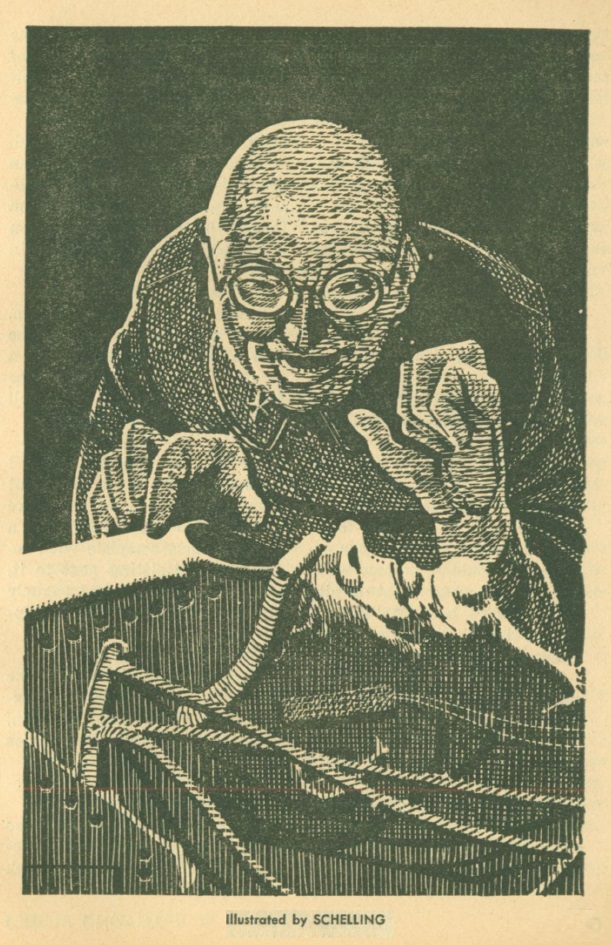
by George Schelling
Norman Spinrad displays his own brand of ambition with Your Name Shall Be . . . Darkness, about an Army psychiatrist captured and subjected to sophisticated brainwashing in the Korean War. He is repatriated, seemingly intact, but . . . . This is essentially The Manchurian Candidate as applied social psychology, and pretty clever, though done in an overly bombastic style for my taste. Still, it’s effective: three stars verging on four.
The Seminarian, by Jack Sharkey

by Virgil Finlay
And, last of the fiction, Jack Sharkey . . . is Jack Sharkey, with The Seminarian, about a guy, the son of missionaries, reared on a South Sea island without significant technology who comes to the States to conduct his own missionary work. It’s a tribute to Sharkey’s superficial skills that his facility distracts one from the story’s complete implausibility. Two stars. Sure you don’t want to go into advertising, Jack?
The Lying Stones of Dr. Beringer, by Robert Silverberg

by Virgil Finlay
There’s a new byline on this month’s non-fiction: Robert Silverberg (also now the regular book reviewer) contributes The Lying Stones of Dr. Beringer, apparently the first of a series—it’s labelled “Scientific Hoaxes #1.” It’s about a 16th-Century German scholar who was taken in by a large aggregation of fake fossils, an interesting story in itself (especially in the hands of Silverberg, a much more capable writer than the usual suspect Ben Bova) and one which contributed to a shift in understanding of what fossils actually are. Three stars.
Summing Up
So, business as usual at Amazing: a couple of nice tries, one dreary failure, one lighter-than-air piece of trivia, plus a better article than usual. Steady as she goes.

[Join us at Portal 55, Galactic Journey's real-time lounge! Talk about your favorite SFF, chat with the Traveler and co., relax, sit a spell…]

![[October 12, 1964] Slow Cruising (November 1964 <i>Amazing</i>)](https://galacticjourney.org/wp-content/uploads/2019/10/641010cover-672x372.jpg)

![[September 12, 1964] A Mysterious Affair of Style (October 1964 <i>Amazing</i>)](https://galacticjourney.org/wp-content/uploads/2019/09/amz1064cover-618x372.png)
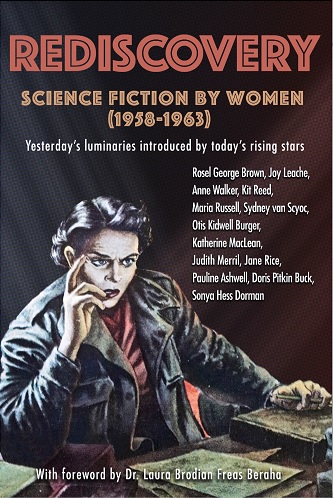
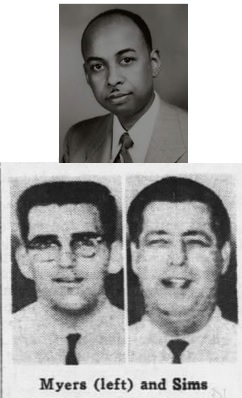
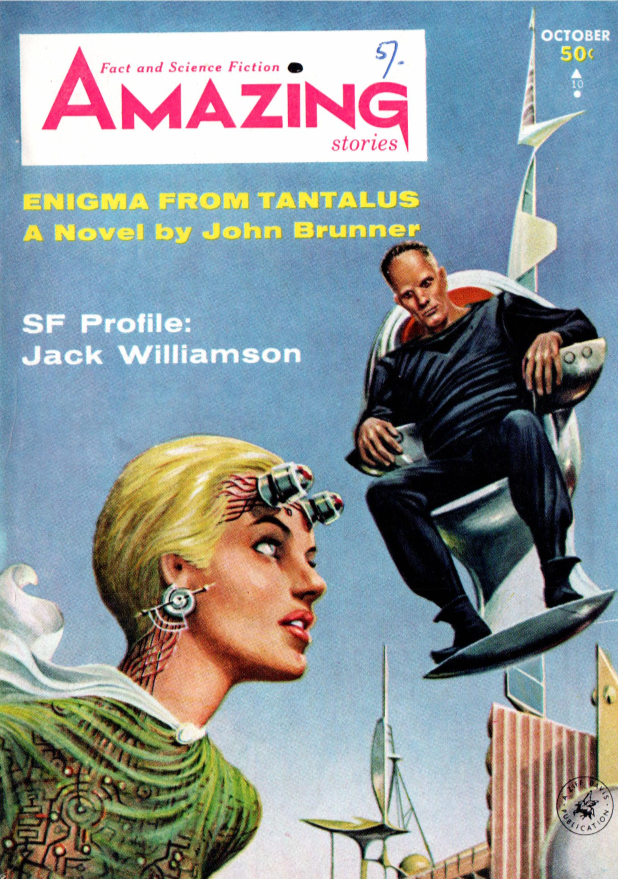
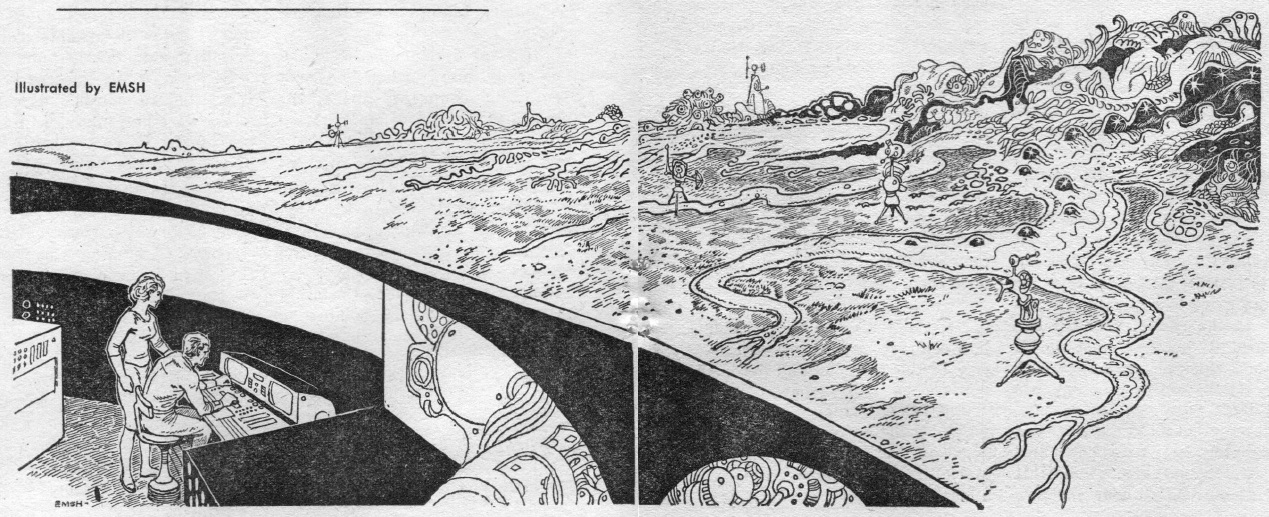 by Ed Emshwiller
by Ed Emshwiller




![[August 13, 1964] Plus ça change (September 1964 <i>Amazing</i>)](https://galacticjourney.org/wp-content/uploads/2019/08/amz0964cover-2-649x372.png)








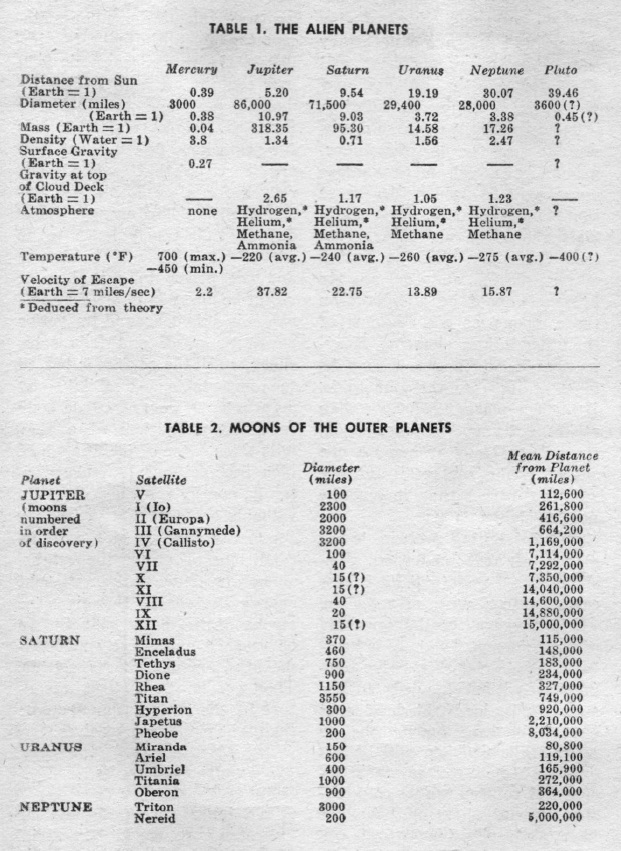
![[July 14, 1964] TO THE MOON, ALICE (the August 1964 <i>Amazing</i>)](https://galacticjourney.org/wp-content/uploads/2019/07/640714cover-659x372.jpg)









![[June 12, 1964] RISING THROUGH THE MURK (the July 1964 <i>Amazing</i>)](https://galacticjourney.org/wp-content/uploads/2019/06/640612cover-672x372.jpg)






![[May 10, 1964] STUCK IN THE MIDDLE (the June 1964 <i>Amazing</i>)](https://galacticjourney.org/wp-content/uploads/2019/05/640510cover-672x372.jpg)






![[April 14, 1964] COOKING WITH ASH (the May 1964 <i>Amazing</i>)](https://galacticjourney.org/wp-content/uploads/2019/04/640414cover-672x372.jpg)
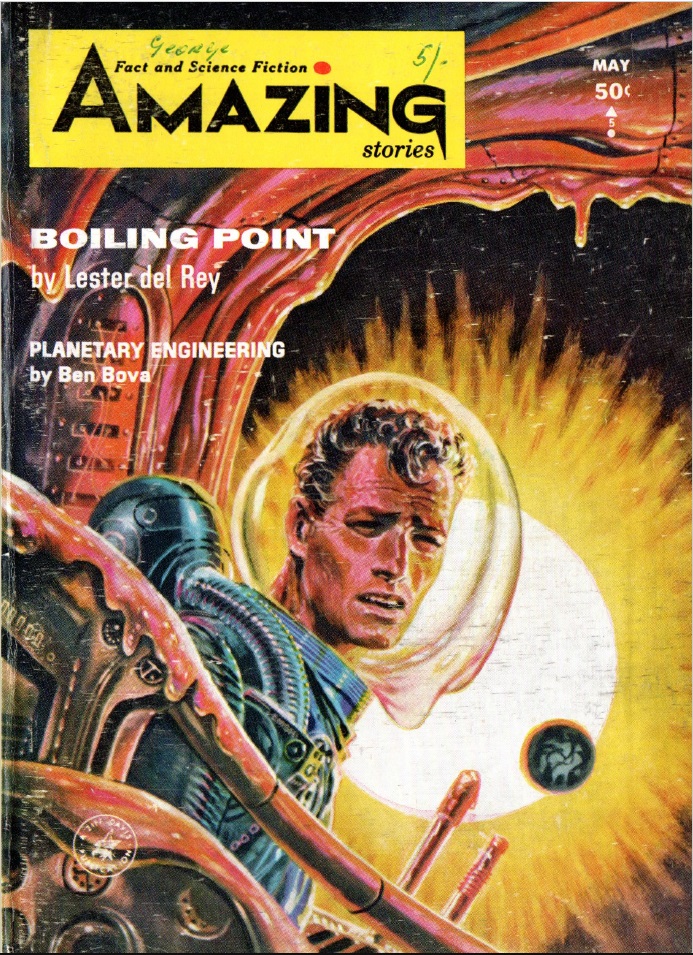
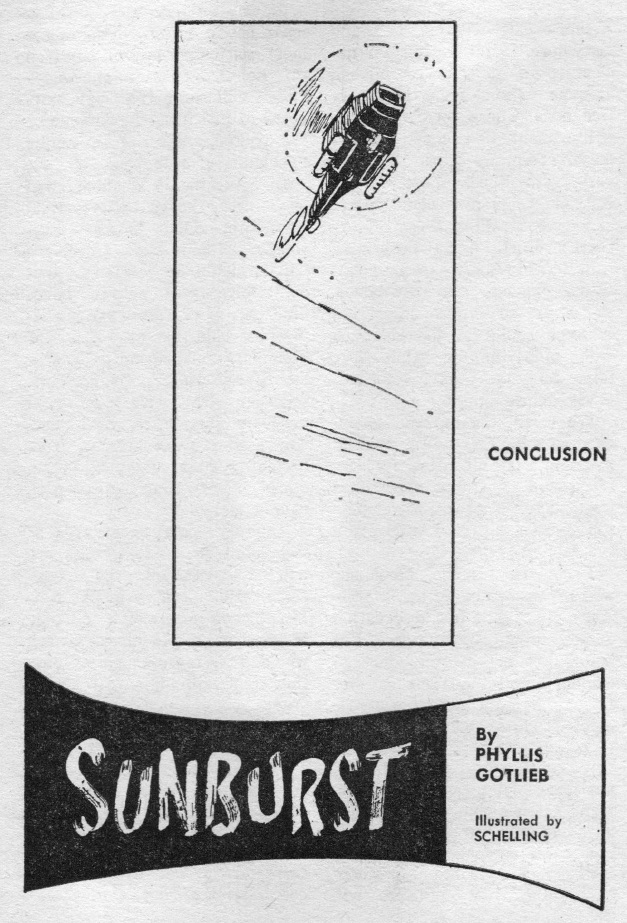
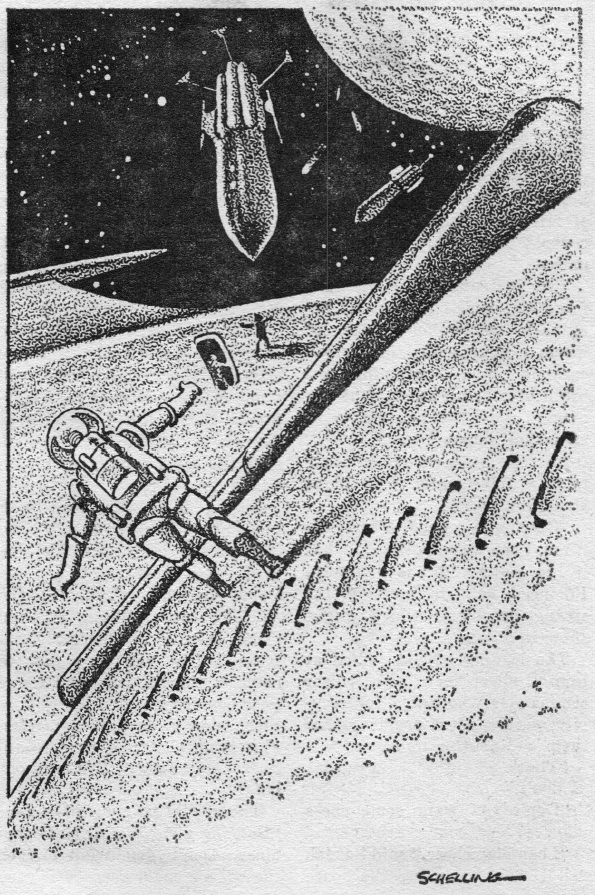

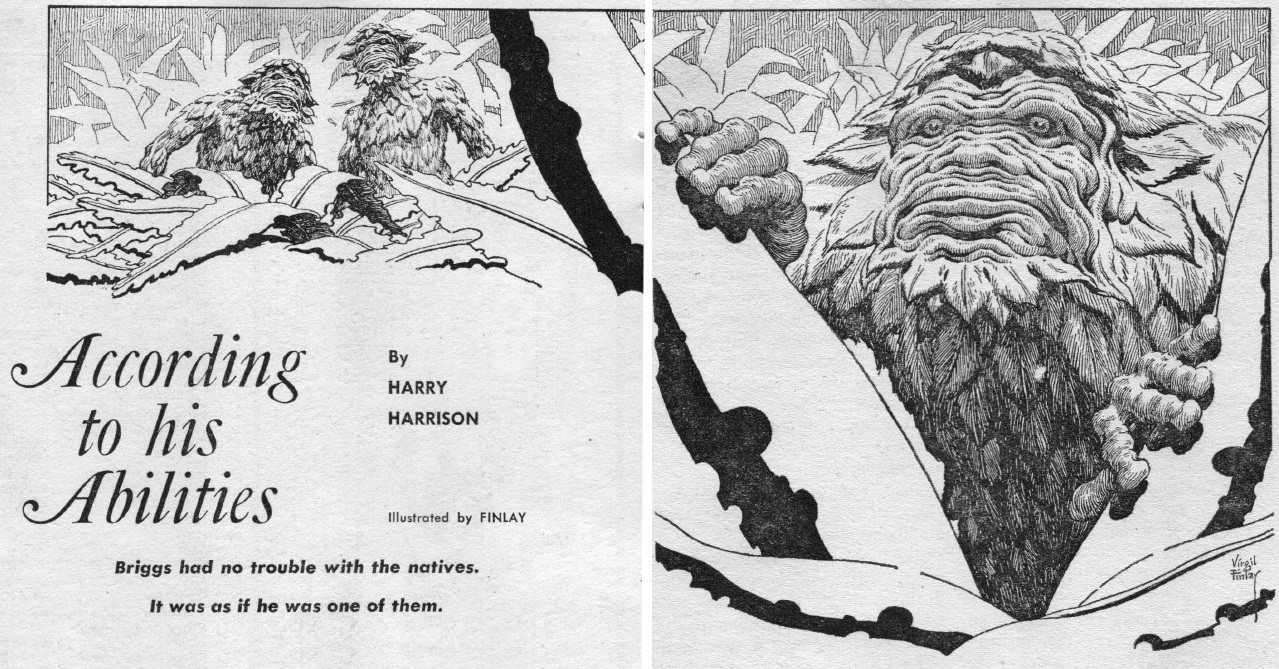
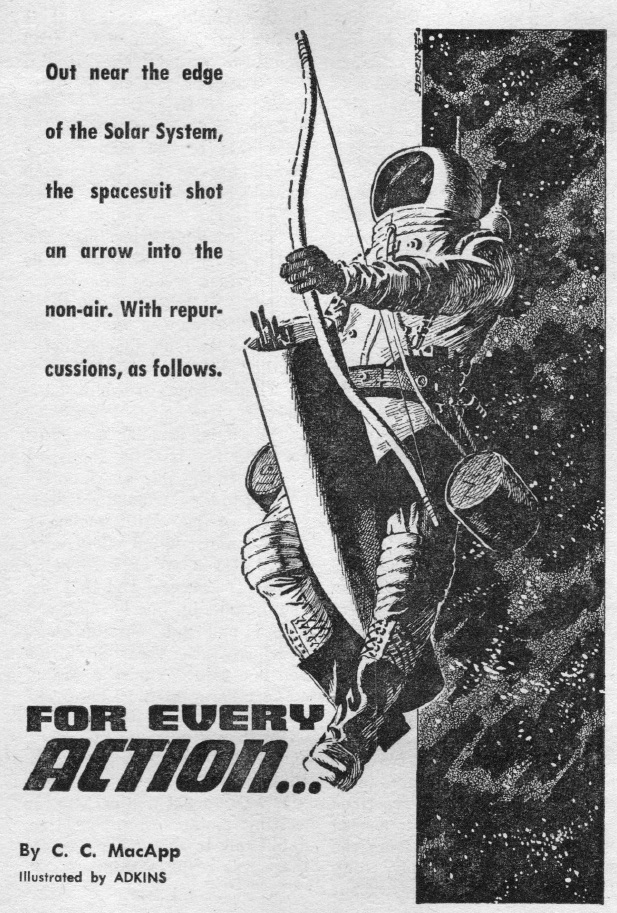
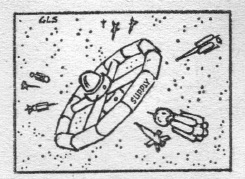
![[March 13, 1964] NOTHING MUCH TO SAY (the April 1964 <i>Amazing</i>)](https://galacticjourney.org/wp-content/uploads/2019/03/640313cover-672x372.jpg)
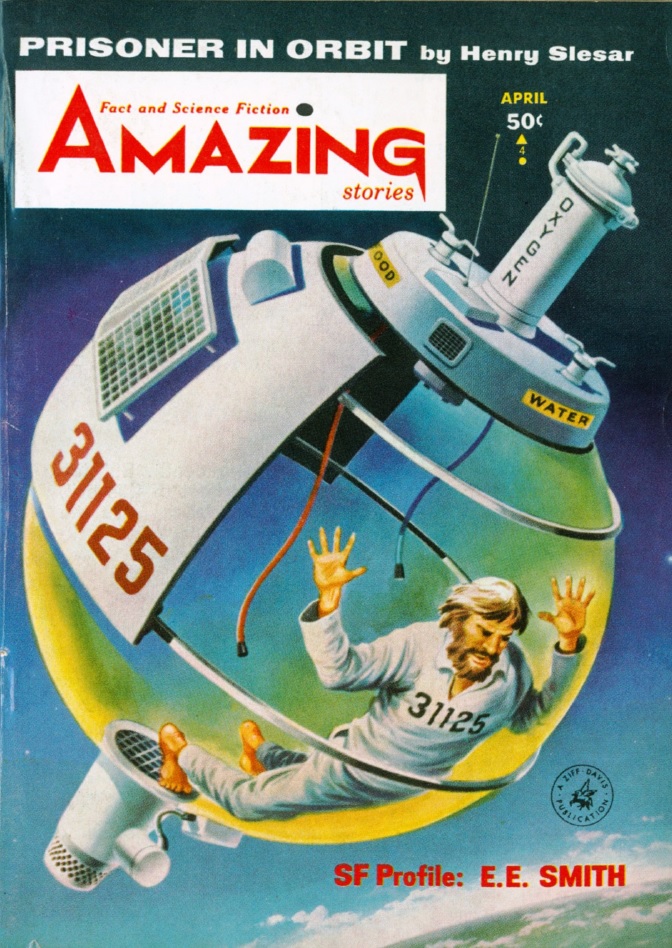
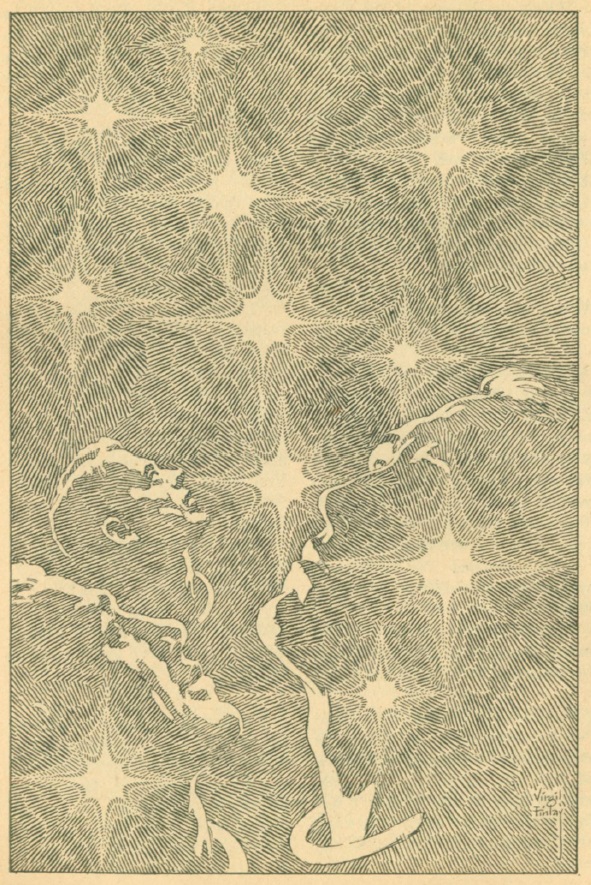
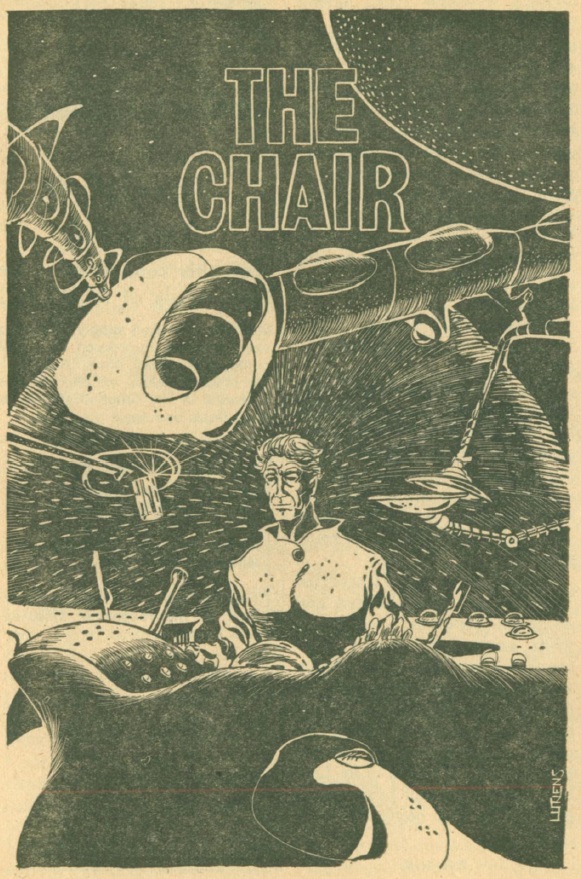
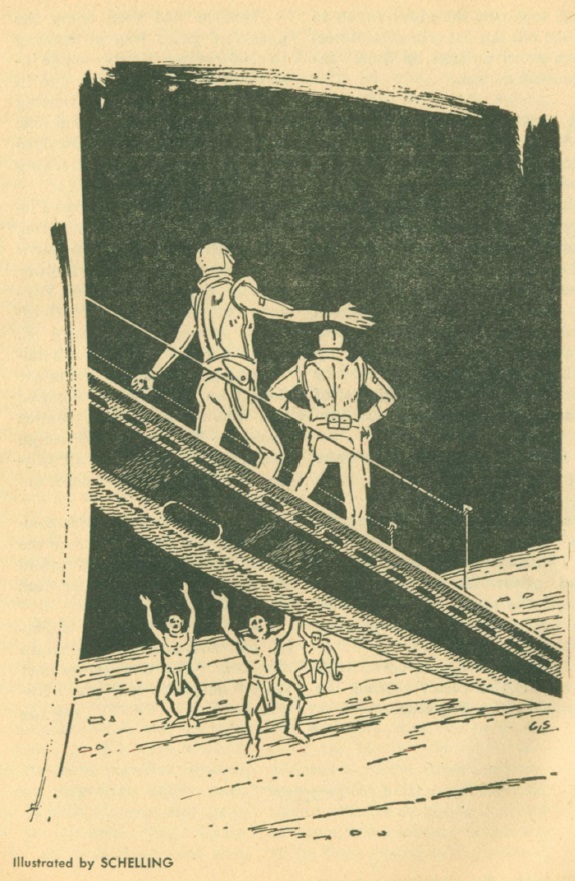

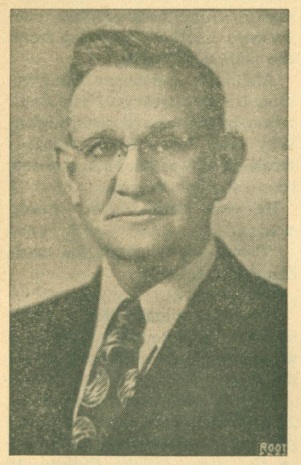
![[February 13, 1964] Deafening (the March 1964 <i>Amazing</i>)](https://galacticjourney.org/wp-content/uploads/2019/02/640213cover-672x372.jpg)







![[January 12, 1964] SINKING OUT OF SIGHT (the February 1964 <i>Amazing</i>)](https://galacticjourney.org/wp-content/uploads/2019/01/640112cover-672x372.jpg)




